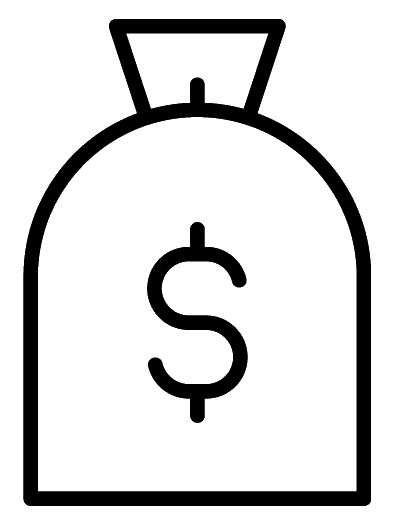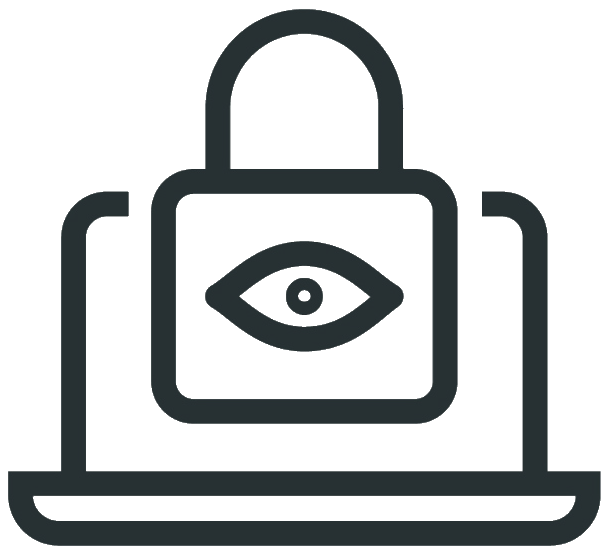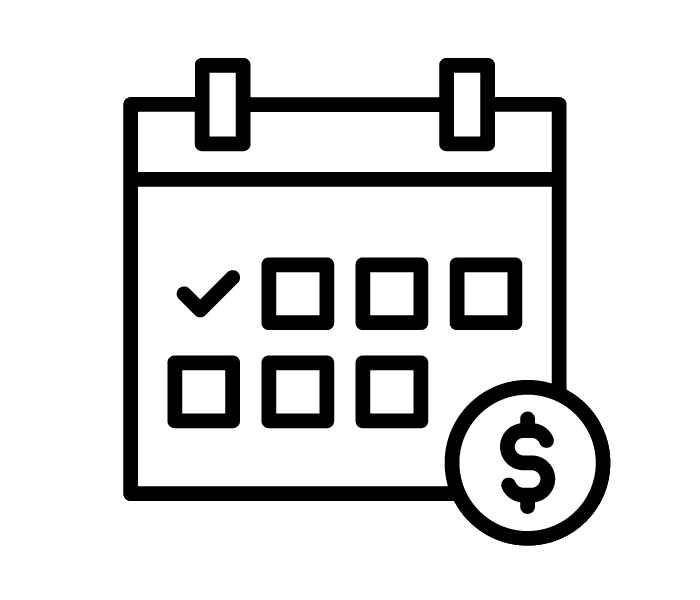Compare the Best Personal Finance Options in December 2024
Learn more about and compare personal finance options from credit building to credit monitoring to budgeting and much more!
No matter who you are or what your situation, it’s important to take charge of your financial life starting right now. Use our guide and take the financial steps that could put you on the path to financial independence.
Know where your money goes
To help take control of your money, you have to know how much you have coming in each month, how much you’re spending each month—and for what reasons. A study by the nonprofit America Saves says that 72% of men spend less than their income and save the difference, but just 60% of women do the same.
Take these steps to get started:
- Create a list. Put your monthly take home pay (after taxes) at the top.
- Add fixed expenses. These are monthly recurring expenses that don’t change much (or at all) from month to month. Your rent or mortgage, utilities, insurance, car payments, and debt payments (at least the minimum due) may fall into this category. As you add each expense to your list, subtract the amount from your total income.
- See how much money is left over. After you’ve covered all your fixed expenses, divvy up what’s left for necessary expenses like groceries, gas, building an emergency savings fund, contributing to your retirement account, and non-essentials like your gym membership.
- Consider if your current spending habits work. If you end up with a negative number once you’ve listed all your financial obligations, you are spending more than you should, based on what you earn. In that case, reduce some of your expenses, figure out how to earn more income (or both).
If you still have money left over after you’ve listed all your expenses, decide what to do with it:
- Should you put more money into savings each month?
- Can you pay more money towards your debts to eliminate balances sooner?
- Are you contributing the recommended 10% of each paycheck to retirement?
- Will you save for other financial goals, like buying a home?
The first step in managing your money is considering where you are today, and knowing where you want to be.
Check your credit report at least once a year
The Brookings Institute says one out of five consumer credit reports contains an error that may cause the person to look like a risky borrower. The information in your credit report influences your credit score. In turn, that can impact whether you’re approved to open credit cards, or whether you can finance a car or buy at home at a competitive interest rate. Your credit may even impact whether you can rent an apartment, or get a job with some employers.
What better reason to make sure that the information in your credit report is accurate? Here’s how:
Request your credit report
Request your electronic report at AnnualCreditReport.com, or call 1-877-322-8228 to receive reports in the mail. You will be asked to provide your name, address, Social Security number and date of birth to complete the request.
Review your reports
When you request your report, you’ll actually get three of them. (One from each credit bureau). Each report looks a little different, but generally contain the same information. Experian says to confirm the accuracy of these details on your reports:
- Your name (current and maiden), address, social security numbers
- Public records like bankruptcy, tax liens, monetary judgments
- Creditor inquiries
- Account information like card issuer or lender, credit limit or loan amount, balance, monthly payment and payment history
Report inaccurate information
If you find information in one of your credit reports that’s inaccurate, report it to the credit bureau in writing (either by the bureau’s online dispute form, or mail) immediately. The Federal Trade Commission says the bureau is legally required to investigate your claim within about 30 days of receiving it. When the investigation is complete, you’ll receive a free copy of your updated credit report if there was a change made to your report.
If your dispute doesn’t result in a change to your credit report, the FTC says you can request that the credit bureau include a statement with your credit report. Your credit report won’t change, but the statement gives the chance to explain why you feel specific information isn’t correct. Any creditor who may look at your report will see it.
Monitor your credit score
The information in your credit report contributes to your credit score, but they don’t contain your credit score number. Your credit score is made up of the following factors, and can change each month:
- Payment history. Missed payments could remain on your credit report for several years.
- Balances on credit accounts. High credit balances (compared to your available credit line) may cause lenders to believe you are a higher-risk borrower who is financially reliant on credit.
- The length of your credit history. The longer you’ve owned credit in your name, the more beneficial it may be to your credit score.
- New credit. If you apply for and/or open too many new accounts in a short period of time, it may negatively impact your credit score. (Even if you apply for a new credit card account at a store to receive a store discount, and never use the card).
- Credit mix. Credit cards are considered revolving credit, but a car, student or home loan are installment accounts. Your credit should (ideally) include both types of accounts.
Many credit card companies now offer customers free credit scores and free automated monthly monitoring of them. Websites such as Credit Karma and Credit Sesame also provide free monthly monitoring for customers who establish a free account.
Use these services to see how your credit score goes up or down each month, and so you can see how your spending or debt management habits impact your credit.
What credit score should you have?
Experian says to strive for these credit score ranges:
- “Good” FICO score: 670-739
- “Very Good” FICO score: 740-799
- “Excellent” FICO score: 800+
The higher your credit score, the the higher the likelihood you’ll qualify for loans or lines of credit with a competitive interest rate if you do need to borrow.
Take control of credit card debt
If you have credit card debt, it’s probably costing you money in the form of interest (and possibly, additional fees) until you pay it off. Once that debt is gone, you’ll have more cash to save, contribute to your retirement account, and invest in other financial goals.
Follow these steps to pay off debt:
Face the numbers
Create a list consisting of each debt, the creditor for it, the monthly payment due, total balance, and the interest rate for each loan. Rank the list from highest interest rate to lowest interest rate.
Stop creating more debt
If you can’t resist overspending with credit cards, pay only with cash or your debit card (which pulls funds out of your checking account) to ensure you don’t create more debt.
Get rid of the debt that costs you the most
The loan at the top of your list has the highest interest rate; it costs you the most money to carry each month. Focus on getting rid of it first. (You’ll have to continue paying the minimum amount due on all your loans.)
The next time you pay your bills, set a goal to pay more than you’ve been paying on your highest interest rate debt. If you slash just $15 from your next grocery trip, for example, the $50 you normally pay to your highest interest rate card could increase to $65. The more you pay towards your debt each month, the sooner it will go away. As you move down the list and you start to free yourself from the costs of interest, you’ll have more cash available to pay down your remaining debts.
Search for lower interest rates
The Federal Reserve says that last year, the average credit card interest rates were between 13% and 16%. If you can find a balance transfer offer that temporarily lowers your interest rate below that, transferring some of your highest interest balances to that card could save money, and make it easier to pay down the balance.
Don’t use the card for new purchases, and create a plan to pay down the transferred debt as much as possible before the temporary low interest rate increases.
If you move some of your higher interest credit card balances onto this type of card and pay it off aggressively, you could save some money on interest rate charges, and pay down your loans faster.
Enact a plan for your student loan debt
If you have student loan debt, refinancing student loans into a single lower interest rate loan, applying for loan repayment programs for Federal student loans, or taking advantage of student loan repayment assistance that your employer might offer can lower the cost of the loans so you can pay them off sooner.
Confirm your loan type(s)
You may own a mix of Federal and private student loans. Different loan types have different terms and features, so make sure you know each loan type you have before taking action on your debt. You can find your Federal student loans on the Department of Education’s website. Private student loans will appear on your credit report.
Research your options based on the loan type
If you’re struggling to keep up with your monthly student loan payments on Federal student loans, the U.S. Department of Education says to see whether you qualify for an income-based repayment (IBR) plan, a deferment, or an extended repayment plan.
If you have good credit, you may be able to refinance your current student loan into a new one with a lower interest rate. You can include Federal student loans in a loan refinance, but make sure you don’t want to use any of the programs mentioned above first. Once you refinance, those Federal student loan benefits go away.
Build an emergency savings fund
A study by the nonprofit America Saves says 67% of women feel they are making good progress on their savings, compared to 74% of men. Part of taking control of your financial life means planning for surprises, like job loss or a medical emergency.
Try to save the equivalent of at least three months of your income in a savings account that’s reserved for emergencies. If you have a lot of debt to pay off, start with the goal to save just one month’s worth of your take home pay to start. As you pay down more of your debt, you’ll have more cash to save.
- Look for a savings account that pays interest, and doesn’t charge fees for the account. You won’t earn a lot of money on your deposit with a savings account, but you’ll know the money is there if you need it.
- Establish automatic contributions to the account each month. Even if you can only afford a small amount from every paycheck. Over time, your money will start to add up. A person who saves just $50 a month will have more than $600 saved for emergencies in one year.
Contribute to retirement every month
Willis Towers Watson says 33% of the women it surveyed feel confident they’ll have the resources to live comfortably throughout retirement.
Saving some amount of money from each paycheck into a retirement savings account has to be a financial priority, even if your contributions start out small. The earlier you start putting money towards retirement, the more it grows over time.
- If your employer offers you the ability to participate in a 401(k) or 403(b) retirement plan your contributions use pretax dollars. This means money you put towards retirement in either of these plans could lower your taxable income.
- If your employer offers to “match” what you contribute, save at least that much in your retirement account. It’s free money from your employer, but you have to contribute to your workplace plan to claim it.
- Depending on your adjusted gross income (AGI), you might be eligible to open/contribute to an IRA, or a ROTH IRA, even if you already participate in an employer-sponsored plan.
- The IRS says saving for retirement could also help you qualify for other tax benefits like the Saver’s Credit.
Taking charge of your financial life isn’t difficult — and it will reward you over the course of your life. Follow these tips to gain control over your money, and build the life you want.


